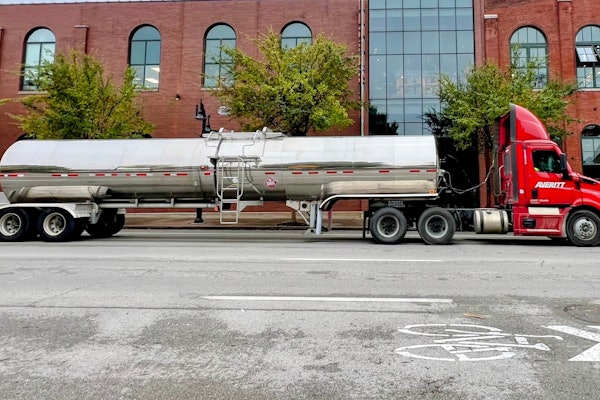By Max Kvidera
Lured by the prospect of replacing thousands of old, polluting trucks chugging away at the nation’s ports, Sterling Trucks is promoting its natural gas-powered Set-Back 113-inch tractor as an environmental-friendly solution.
Sterling will produce 400 liquefied natural gas trucks this year for a drayage company operating at the ports of Los Angeles and Long Beach. In the first half of next year, Sterling plans to build another 500 to 700 SB 113 tractors fueled by compressed natural gas.
Thousands – perhaps as many as 40,000 – of 1990s and older trucks pick up cargo at U.S. ports and transport it short distances for unloading at warehouses or to rail, says Robert Carrick, Sterling general manager for the Western region. Ports and local and state governments are developing programs to get rid of these vehicles and replace them with cleaner-burning alternatives.
Under the multibillion-dollar Clean Trucks Program, the busy Los Angeles-area ports plan to replace 20 percent of the heaviest polluters by October and the rest of the estimated 16,000 trucks working at their facilities by 2012. Replacements must meet 2007 Environmental Protection Agency emissions standards.
“This is a tremendous opportunity for Sterling,” Carrick says. “The experience at the L.A. ports will be key to making this happen at other ports in the country.”
The Sterling SB 113 is powered by the Cummins Westport ISL G, an 8.9-liter exhaust gas recirculation engine. Compliant with EPA 2010 standards, the engine cuts nitrogen oxide emissions by 85 percent over the previous Cummins Westport C Gas Plus natural gas engine. The new engine is available in ratings up to 320 hp.
The current LNG version of the truck carries a 119-gallon tank. Carrick says the truck has a range of 275 miles. Sterling claims that running on natural gas technology can save about $6,000 annually in fuel and operating costs per truck. LNG and CNG cost about 30 percent less than diesel.








